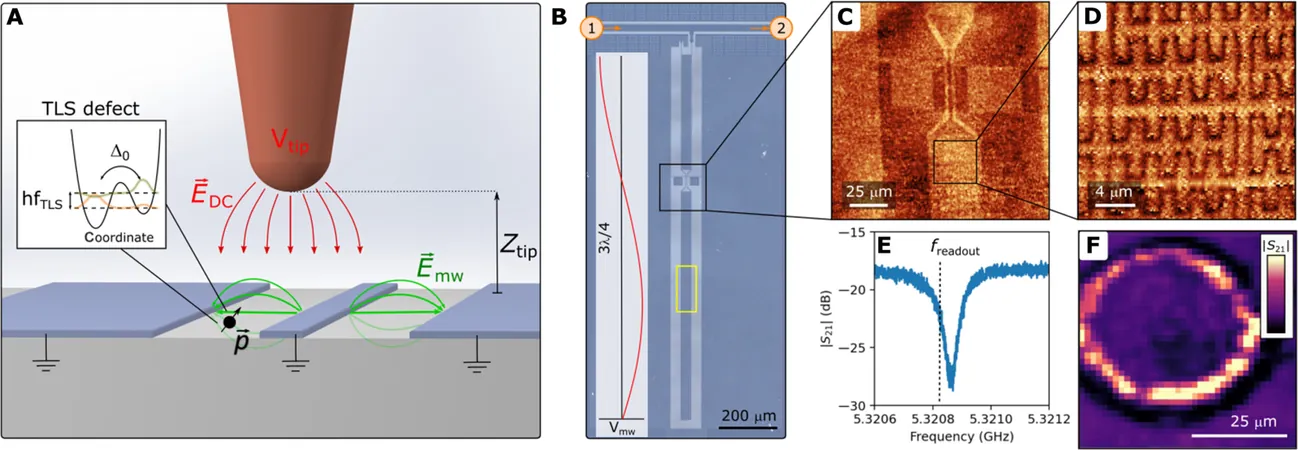
Groundbreaking Breakthrough: First-Ever Imaging of Defects in Superconducting Quantum Circuits!
2025-07-07
Author: Nur
Revolutionizing Quantum Computing with Defect Imaging
In an extraordinary breakthrough, scientists at the National Physical Laboratory (NPL), alongside Chalmers University of Technology and Royal Holloway University of London, have successfully imaged individual defects within superconducting quantum circuits for the very first time!
Published in the prestigious journal Science Advances, this groundbreaking research marks a monumental leap in our comprehension of elusive material flaws, specifically the two-level system (TLS) defects that challenge the stability of quantum technology.
Unlocking the Mysteries of Decoherence
Quantum computers hold the potential to reshape industries, from cybersecurity to drug discovery, yet they are hindered by a significant challenge: decoherence. This phenomenon occurs when quantum information escapes, leading to irreversible data loss, primarily caused by TLS defects in superconducting circuits, one of the leading platforms in quantum computing.
Despite being known for over fifty years, individual TLS defects have eluded detection and study—until now.
A Game-Changing Instrument for Defect Detection
The NPL team has engineered a revolutionary instrument that combines cutting-edge microscopy techniques with live quantum circuits. This device operates in an ultra-controlled dark chamber, cooled just above absolute zero, ensuring minimal thermal disturbances that could interfere with delicate quantum states.
This innovative tool paves the way for precise locating, imaging, and identification of these pesky defects, which could eventually lead to their elimination, setting a new standard for dependable quantum computing.
Visualizing the Unseen: A New Era of Research
Dr. Riju Banerjee, a senior scientist at NPL and a lead author of the study, expressed excitement over the findings: "For years, we’ve speculated that TLS defects disrupt quantum circuits. Now, we can finally visualize the fluctuations and decoherence caused by each defect as they interact with the circuit. The initial data from our instrument is phenomenal—it's as if we're observing a turbulent liquid inside the circuit, with defects appearing as rippling rings, much like raindrops on a pond."
This pivotal step not only illuminates the behavior of TLS defects but also fuels optimism for future advancements in quantum computing, bringing us closer to machines that could surpass the capabilities of their classical counterparts.


 Brasil (PT)
Brasil (PT)
 Canada (EN)
Canada (EN)
 Chile (ES)
Chile (ES)
 Česko (CS)
Česko (CS)
 대한민국 (KO)
대한민국 (KO)
 España (ES)
España (ES)
 France (FR)
France (FR)
 Hong Kong (EN)
Hong Kong (EN)
 Italia (IT)
Italia (IT)
 日本 (JA)
日本 (JA)
 Magyarország (HU)
Magyarország (HU)
 Norge (NO)
Norge (NO)
 Polska (PL)
Polska (PL)
 Schweiz (DE)
Schweiz (DE)
 Singapore (EN)
Singapore (EN)
 Sverige (SV)
Sverige (SV)
 Suomi (FI)
Suomi (FI)
 Türkiye (TR)
Türkiye (TR)
 الإمارات العربية المتحدة (AR)
الإمارات العربية المتحدة (AR)